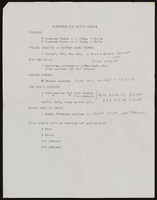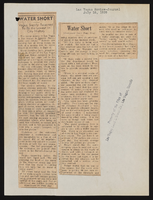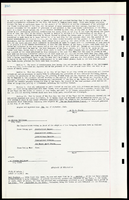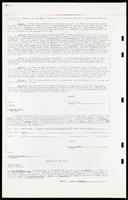Search the Special Collections and Archives Portal
Search Results
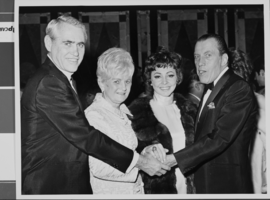
Photograph of Mayor Oran K. Gragson, his wife Bonnie, with Mr. and Mrs. Ed Sullivan, Las Vegas, Nevada, circa 1960s
Date
1960 to 1969
Archival Collection
Description
Pictured L-R: Las Vegas Mayor Oran K. Gragson, his wife Bonnie, with Mrs. Ed Sullivan and Mr. Ed Sullivan. Oran Kenneth Gragson (February 14, 1911 – October 7, 2002) was an American businessman and politician. He was the longest-serving mayor of Las Vegas, Nevada, from 1959 to 1975. Gragson, a member of the Republican Party, was a small business owner who was elected Mayor on a reform platform against police corruption and for equal opportunity for people of all socio-economic and racial categories. Gragson died in a Las Vegas hospice on October 7, 2002, at the age of 91. The Oran K. Gragson Elementary School located at 555 N. Honolulu Street, Las Vegas, NV 89110 was named in his honor. Edward Vincent "Ed" Sullivan (September 28, 1901 – October 13, 1974) was an American television personality, sports and entertainment reporter, and longtime syndicated columnist for the New York Daily News. He is principally remembered as the creator and host of the television variety program The Toast of the Town, later popularly—and, eventually, officially—renamed The Ed Sullivan Show. Broadcast for 23 years from 1948 to 1971, it set a record as the longest-running variety show in US broadcast history. "It was, by almost any measure, the last great TV show," proclaimed television critic David Hinckley. "It's one of our fondest, dearest pop culture memories."
Image
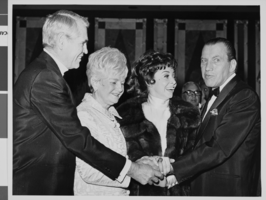
Photograph of Mayor Oran K. Gragson, his wife Bonnie, with Mr. and Mrs. Ed Sullivan, Las Vegas, Nevada, circa 1960s
Date
1960 to 1969
Archival Collection
Description
Pictured L-R: Las Vegas Mayor Oran K. Gragson, his wife Bonnie, with Mrs. Ed Sullivan, and Mr. Ed Sullivan. Oran Kenneth Gragson (February 14, 1911 – October 7, 2002) was an American businessman and politician. He was the longest-serving mayor of Las Vegas, Nevada, from 1959 to 1975. Gragson, a member of the Republican Party, was a small business owner who was elected Mayor on a reform platform against police corruption and for equal opportunity for people of all socio-economic and racial categories. Gragson died in a Las Vegas hospice on October 7, 2002, at the age of 91. The Oran K. Gragson Elementary School located at 555 N. Honolulu Street, Las Vegas, NV 89110 was named in his honor. Edward Vincent "Ed" Sullivan (September 28, 1901 – October 13, 1974) was an American television personality, sports and entertainment reporter, and longtime syndicated columnist for the New York Daily News. He is principally remembered as the creator and host of the television variety program The Toast of the Town, later popularly—and, eventually, officially—renamed The Ed Sullivan Show. Broadcast for 23 years from 1948 to 1971, it set a record as the longest-running variety show in US broadcast history. "It was, by almost any measure, the last great TV show," proclaimed television critic David Hinckley. "It's one of our fondest, dearest pop culture memories."
Image
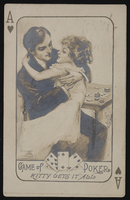
Front of postcard
Date
1910 to 1919
Description
Front of the postcard illustrates a man holding a woman near a table with poker chips and playing cards.
Image
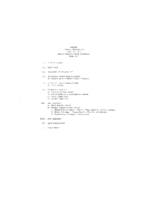
Meeting minutes for Consolidated Student Senate, University of Nevada, Las Vegas, June 12, 1979
Date
1979-06-12
Archival Collection
Description
Agenda and meeting minutes for the University of Nevada, Las Vegas Student Senate. CSUN Session 8 Meeting Minutes and Agendas.
Text
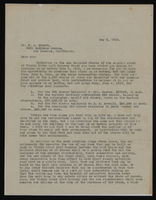
Correspondence, Thomas Toland to F.A. Truett
Date
1917-05-15
Archival Collection
Description
This folder is from the "Correspondence" file of the Sadie and Hampton George Papers (MS-00434)
Text
Pagination
Refine my results
Content Type
Creator or Contributor
Subject
Archival Collection
Digital Project
Resource Type
Year
Material Type
Place
Language
Records Classification

